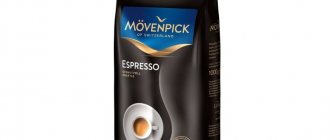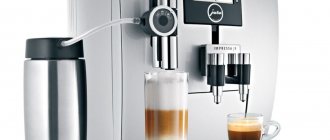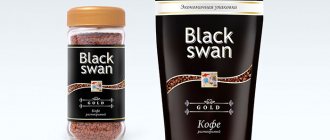Let's understand the company of a sports doctor.
Brands of energy drink manufacturers have long penetrated the sports world: they sponsor teams and tournaments, and we regularly see their logo on athletes’ uniforms.
Advertising slogans for drinks promise a surge of strength and a powerful boost of vivacity - it seems that with them you really become faster, stronger, and more resilient. It's time to figure out how effective energy drinks are and whether they are harmful.
Sports doctor Valentin Belyaevsky, who worked in Rostov, basketball and MMA, helped us.
Billionaire brands: which one is more successful?
In 2018 alone, the total sales of energy drinks in the United States reached $11 billion. The best-selling brand in the States is Red Bull ($4.6 billion), in second place is Monster ($4.1 billion), the rest are significantly behind the leaders. The situation in the world is as follows:
1. Red Bull2. Monster3. Rockstar Zero Carb4. Eastroc Super Drink 5. Hi-Tiger 6. Lucozade 7. NOS 8. Oronamin9. Burn 10. Adrenalin Rush
The Red Bull company was founded by the Austrian Dietrich Mateschitz in the early 80s , but the recipe for the drink was not his; The basis was the energy drink Krating Daeng (translated as Red Bull), which Dietrich met in Thailand.
Krating Daeng was popular among Thai truckers and workers - it was good for reducing drowsiness and adding energy. Mateschitz accidentally tried the drink in Thailand and was surprised to find that the energy drink helped cope with jet lag - jet lag. Together with the drink's producer Chaleo Juvidja, Mateschitz founded the new Red Bull company and launched a modernized version of Krating Daeng in the European market in 1987.
In 2008, Forbes included Juvidja and Mateschitz in the list of the richest people in the world in 260th place with an approximate fortune of $4 billion. In 2020, almost 7 billion cans of the drink were sold worldwide.
The composition of Red Bull energy drink is richer than Lucozade: carbonated water, taurine, caffeine, B vitamins (B3, B5, B6, B12), sucrose, glucose, sweeteners, acidity regulators, dyes, flavors. One 250 ml can of Red Bull contains about 26 g of sugar - just over 5 teaspoons.
But there is a sugar-free option - Red Bull Sugar Free, which does not even contain sweeteners.
Manufacturers promise that the drink will relieve fatigue and drowsiness, increase vigor and tone.
Most Common Energy Drink Ingredients
Not just green tea and caffeine, as they say. Substances also associated with energy drinks include:
- glucose, fructose and maltodextrin are responsible for energy production;
- carnitine – enhances metabolism, neutralizes free radicals;
- taurine – restores heart rhythm, is a neuromodulator;
- guarana – improves mood, reduces hunger;
- ginseng – reduces sensitivity to heat and cold, accelerates the elimination of lactic acid;
- vitamins and minerals – have a tonic effect and strengthen the immune system.
What's in a standard energy drink?
Substance content based on a volume of 250 ml.
Taurine
It is a sulfonic acid formed in the body from the amino acid cysteine. It is already found in small quantities in the human body, but in a separate form it is used as a food additive. Taurine helps improve energy processes, stimulates healing processes, improves heart function, supports metabolism and removes excess cholesterol.
German scientists believe that spinach is doping and ask WADA to ban it. Seriously?!
A person usually gets enough taurine per day from meat and fish. An additional dose of sulfonic acid is good, especially for athletes: taurine supports skeletal muscle function, increases endurance and quickly restores the body after exercise. Scientists from the University of Stirling in Scotland found that an extra 1,000 mg of taurine before a race improved the performance of middle-distance runners by a few seconds.
There is no harm from taurine: it does not affect the cardiovascular system and breathing. In a standard energy drink, the dose of taurine is exactly 1000 mg, which is 2 times the daily requirement. But an overdose is not terrible - the body simply will not absorb more sulfonic acids than it needs. So even a few grams of taurine will not harm your health.
Caffeine
An alkaloid and psychostimulant found in coffee and tea. Caffeine is included in any energy drink, although not always under the standard name - sometimes it is disguised as mateine or theine.
Caffeine reduces drowsiness, accelerates the pulse, raises blood pressure, stimulates the central nervous system and dilates blood vessels.
Caffeine has many uses in sports. It stops the action of the nucleoside adenosine, which is responsible for the feeling of drowsiness - after a dose of caffeine, a person feels more alert and can exercise longer. Caffeine also enhances the synthesis of fatty acids in the body - thus, training with caffeine burns fat, converting it into energy faster than standard.
A can of energy drink contains about 75 mg of caffeine - about the same amount in a cup of coffee of the same volume. This is not much, but it is enough for a positive effect. Drinking several cans makes no sense and is no longer safe for health: the maximum daily dose of caffeine for an adult is 400 mg.
Unlike taurine, caffeine has harmful properties - it depletes the nervous system, disrupts sleep rhythm, interferes with the absorption of calcium in the body, weakens bones and leads to problems with the cardiovascular system. Long-term use of caffeine causes a slight dependence, and abrupt withdrawal of the substance is dangerous due to withdrawal syndrome.
Cocaine and marijuana have found their way into sports. The era of doping began with them, alcohol and amphetamines
There is as yet unproven speculation that caffeine in large doses or chronic abuse can cause psychosis in healthy people. There are also side effects: anxiety, tremor, headache, dizziness, nausea, arrhythmia and tachycardia.
Belyaevsky: “ If you consume a lot of caffeine, then, of course, it is harmful. But there are certain dosages that, on the contrary, are necessary for athletes. Caffeine is an integral part of sports. It is a stimulant of the nervous system and quickly returns blood pressure to normal. This is why a huge number of different energy drinks are created - the dosage of caffeine is selected everywhere, somewhere more, somewhere less. They won't even be registered if they exceed the permissible dosage. Usually in energy drinks the dose of caffeine is even lower than therapeutic .”
Guarana
It is an evergreen shrub that grows in warm countries. A substance analogue of caffeine is extracted from its seeds - they contain even more of it than coffee beans.
In addition to caffeine, guarana extract contains several types of tannins in small quantities.
The effect of guarana is the same as that of caffeine, the side effects and harm are similar. One can of energy drink contains about 5.3 mg of guarana extract. In fact, guarana in energy drinks is an additional source of caffeine.
B vitamins
There are four types of energy drinks:
• nicotinic acid (B3) is responsible for the synthesis of proteins and fats - in other words, converts food into energy. It is found in many foods, so that with a balanced diet, a person can easily consume the recommended amount per day - 15 mg. In energy drinks, nicotinic acid is approximately half the daily requirement - 5-8 mg;
• pantothenic acid (B5 ) is necessary for the construction, maintenance and development of cells and the synthesis of vitamin A. From exposure to caffeine, the content of vitamin B5 in the body decreases, so it is added to energy drinks for a reason. The daily norm is 4-7 mg, the content in energy drinks is about 2 mg;
• pyridoxine (B6) is involved in the processes of carbohydrate metabolism, the synthesis of hemoglobin and polyunsaturated fatty acids, regulates the activity of the nervous system, produces energy in the body, and increases physical performance. The daily norm is about 2 mg - the same amount as in energy drinks;
• folic acid (B9) promotes the formation of nucleic acids and cell division, the formation of red blood cells, the development of the immune and circulatory systems. Energy drinks usually contain half the daily requirement.
B vitamins themselves are necessary for the body, but most people get the required amount from food, so they simply do not need an additional source.
Athletes are an exception: B vitamins bring additional benefits during training and competitions. Vitamin B5 is especially useful here - it is washed out of the body under the influence of caffeine, so its presence in energy drinks is mandatory.
Belyaevsky: “The vitamins in the composition are already boosters. Substances that either prolong the effect of caffeine, that is, reduce its absorption, or enhance its effect, or simply provide additional bonuses. B vitamins enhance the transport properties of oxygen.”
Carbohydrates
Glucose and sucrose. A person gets most of his energy from carbohydrates. In athletes under heavy loads, the need for carbohydrates increases, and a sufficient dose of glucose easily satisfies this need.
The absorption of glucose occurs with the participation of the hormone insulin. After exercise, muscle tissue becomes more sensitive to insulin, so that glucose penetrates it better.
In fact, the glucose and sucrose in energy drinks is the very energy from which the drinks get their name. They increase performance and increase endurance, and their use before competitions or training will not give side effects and will be beneficial, but not in its pure form - always as part of a drink.
Taurine
Taurine is a substance with a structure similar to an amino acid. Antioxidants in coffee are represented by this substance. This compound is usually synthesized in the human body. Taurine in coffee can have a beneficial effect on the body.
Positive effects of this substance:
- pronounced antioxidant effect, which prevents carcinogenesis;
- decreased blood sugar levels;
- regenerative effect on the optical structures of the eye;
- hypotensive effect;
- participation in the metabolism of calcium, sodium and potassium;
- positive effect on the nervous system.
Where does the “energy effect” come from?
From the internal reserves of the body and nothing more. Energy drinks mobilize the waste of a person’s own energy reserves - when the effect wears off (and it lasts up to 1 hour), the strength will become even less than before use.
Belyaevsky: “You need to understand that an energy drink does not provide energy from the outside, it wastes your own energy, your resources. Roughly speaking, you have a certain amount of energy that is slowly consumed to maintain metabolism and stimulate the central nervous system. This energy appears and splits in you. And the energy drink does not provide additional energy.
Yes, there are carbohydrates, but there is also caffeine, which speeds up metabolism. If at this moment you do not eat anything additional, do not consume any other carbohydrates, then only your energy will be consumed, and faster than usual. It's like with a car - you can drive slowly, or you can accelerate all the time. Fuel consumption will be completely different. It’s the same here – the energy drink invigorates you for a while, about an hour, and then it will get even worse. There will be a hole because you spent more energy than planned.”
What should I do?
A logical question: what to do? It is obvious that those who have taken the path of yoga do not need any doping. However, if the practitioner’s level is not yet so high, and he cannot find energy in himself, there is a good Ayurvedic recipe. Mix a teaspoon of turmeric in a glass of warm water and add a teaspoon of lemon juice. Drink the resulting drink in small sips in the morning. An invigorating and healthy drink will replace not only energy drinks, but also coffee.
Take care of yourself and be healthy!
So are energy drinks useful or not?
Yes and no. It all depends on what and how to use them.
It is generally pointless to consume energy drinks without physical activity - this will most likely harm your body. It’s also not worth drinking them to cope with drowsiness and loss of energy - it’s easier to make coffee, it contains less caffeine.
For athletes, the use of energy drinks also does not always make sense. They are definitely not suitable for endurance events - it will only get worse. But short-distance running, swimming in the pool, and weightlifting are suitable options.
Why do athletes drink cola? Is it really harmful?
Belyaevsky: “It all depends on what your task is and what kind of sport. If this is an anaerobic exercise where you need to go up and do a push or pull once, such drinks are justified.
If it’s a marathon, then it’s better not to use them before the start, but towards the end of the race you can. When there is a long load, a huge amount of resources is already spent, and caffeine, taurine and their derivatives will only increase energy consumption. They don’t provide energy, they increase their own consumption.
If you're running a hundred meters, you don't need a lot of energy, you'll run just fine. You don't need additional stimulants to provide your muscles with energy for a long time. In this case, drinking an energy drink is justified. You drank - your blood pressure rose, returned to normal, your pulse increased, muscle metabolism increased, caffeine stimulated the nervous system - and you ran.
Energy gains are justified even at 200 and 400 meters. But if you run a marathon, the situation will be reversed. You drank an energy drink, you began to consume additional energy - you simply won’t have enough for the entire distance, you will need to take additional carbohydrates in the middle.
The time of application is also important. If you drink it half an hour or an hour before exercise, most likely there will be no effect. If you drink right back to back within 15 minutes, it makes sense. Caffeine does not work for long - although manufacturers claim 3-4 hours, even a cup of coffee invigorates for a maximum of an hour.
One more detail - energy drinks can harm the body only if used incorrectly. For example, in large quantities at one time or when used too often. In isolated cases (drinking a can before a race) there will be no harm.
Harm can come from the wrong combination of the type of load - consumption over a long distance, during heavy work.
Or if a person has contraindications, problems with the gastrointestinal tract. After all, energy drinks contain acids, so irritation of the mucous membranes is possible. And then - all energy drinks are lightly carbonated, one might even say degassed, this is not cola. There is practically no carbon dioxide in Red Bull - only minimal concentrations.
Diseases of the cardiovascular system? If a person has such diseases, then he should not engage in sports at all. He doesn’t need such drinks.”
Benefit
It cannot be said that energy drinks have no benefits at all, otherwise they would not be so in demand. The main argument in favor is the opportunity to cheer up and “find access” to the active functioning of the brain and sources of inspiration.
I'm glad it takes so long to achieve this effect. It comes on almost instantly and lasts for at least three hours. For example, coffee or tea are not so effective, because they begin to act after 15 minutes, adding vigor for no more than an hour.
Another plus is ease of use. You just open the can and drink it, even while driving. Coffee is usually consumed hot, so such tricks will not work with it - unless a thermos helps. In any case, an energy drink invigorates much better than coffee, tea or special medications.
Differences between isotonic and energy drinks
It is not difficult to distinguish energy drinks from isotonic drinks. Among the functions of the first are:
- increasing energy capacity;
- stimulation of metabolism;
- accelerating the fat burning process;
- improvement of muscle function.
The purpose of the second is:
- normalization of water-salt balance;
- preventing dehydration;
- reducing recovery time after training.
The main elements of isotonics are water and electrolytes - potassium, calcium, magnesium, etc. B vitamins are also often added to their composition. An energy drink may also contain these components, but its main active ingredients are stimulants. The latter can be natural or artificial, but in sports practice only products of natural origin are used (guarana, green tea, caffeine, ginger, ginseng).
IMPORTANT! With the simultaneous use of isotonics and energy tonics, their beneficial properties are summed up, which allows you to achieve better results during exercise in the gym.
RockStar
This energy drink appeared on Russian store shelves just recently in 2020, but has already become quite popular. Several flavor options are now available: original, lemon, guava and wild berries. According to the study, RockStar drink is less harmful than the above.
It contains only 4 mugs of strong coffee per 0.5 liter jar, less taurine and sugar. Some invigorating substances have been replaced with products of natural origin: ginseng and guava. But still, consuming a large amount will lead to disastrous consequences.
Burn
The energy drink produced by The Coca Cola Company takes second place in the rating, as it contains a minimum of harmful substances. It contains a good vitamin B complex. The drink is popular in more than 80 countries around the world, including Russia.
However, Burn contains caffeine and taurine, but in smaller proportions. The cost of an energy drink starts from 100 rubles, it all depends on the retail network. A small content of harmful substances does not make the drink safe. Its use should be kept to a minimum.











